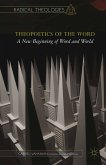Dominic Emmanuel
Challenges of Christian Communication and Broadcasting (eBook, PDF)
Monologue or Dialogue?
40,95 €
40,95 €
inkl. MwSt.
Sofort per Download lieferbar

20 °P sammeln
40,95 €
Als Download kaufen

40,95 €
inkl. MwSt.
Sofort per Download lieferbar

20 °P sammeln
Jetzt verschenken
Alle Infos zum eBook verschenken
40,95 €
inkl. MwSt.
Sofort per Download lieferbar
Alle Infos zum eBook verschenken

20 °P sammeln
Dominic Emmanuel
Challenges of Christian Communication and Broadcasting (eBook, PDF)
Monologue or Dialogue?
- Format: PDF
- Merkliste
- Auf die Merkliste
- Bewerten Bewerten
- Teilen
- Produkt teilen
- Produkterinnerung
- Produkterinnerung

Bitte loggen Sie sich zunächst in Ihr Kundenkonto ein oder registrieren Sie sich bei
bücher.de, um das eBook-Abo tolino select nutzen zu können.
Hier können Sie sich einloggen
Hier können Sie sich einloggen
Sie sind bereits eingeloggt. Klicken Sie auf 2. tolino select Abo, um fortzufahren.

Bitte loggen Sie sich zunächst in Ihr Kundenkonto ein oder registrieren Sie sich bei bücher.de, um das eBook-Abo tolino select nutzen zu können.
The book attempts to establish historically why it became important for Christian Churches in general and the Catholic Church in particular to reconsider their communicative practices. It shows how the Churches tried to change their mode of monological communication to adopt a dialogical one, including dialogue with non-Christian religions. The distinctive character of the book lies in showing that such parallel changes in communicative practices were witnessed in philosophical thinking as well as in the field of secular and religious broadcasting.
- Geräte: PC
- ohne Kopierschutz
- eBook Hilfe
- Größe: 49.94MB
Andere Kunden interessierten sich auch für
![The Divine in Husserl and Other Explorations (eBook, PDF) The Divine in Husserl and Other Explorations (eBook, PDF)]() Angela Ales BelloThe Divine in Husserl and Other Explorations (eBook, PDF)72,95 €
Angela Ales BelloThe Divine in Husserl and Other Explorations (eBook, PDF)72,95 €![Theopoetics of the Word (eBook, PDF) Theopoetics of the Word (eBook, PDF)]() Theopoetics of the Word (eBook, PDF)40,95 €
Theopoetics of the Word (eBook, PDF)40,95 €![Biblical Concepts and our World (eBook, PDF) Biblical Concepts and our World (eBook, PDF)]() Biblical Concepts and our World (eBook, PDF)72,95 €
Biblical Concepts and our World (eBook, PDF)72,95 €![Transformative Pastoral Leadership in the Black Church (eBook, PDF) Transformative Pastoral Leadership in the Black Church (eBook, PDF)]() J. TribbleTransformative Pastoral Leadership in the Black Church (eBook, PDF)40,95 €
J. TribbleTransformative Pastoral Leadership in the Black Church (eBook, PDF)40,95 €![Tao and Trinity: Notes on Self-Reference and the Unity of Opposites in Philosophy (eBook, PDF) Tao and Trinity: Notes on Self-Reference and the Unity of Opposites in Philosophy (eBook, PDF)]() S. AustinTao and Trinity: Notes on Self-Reference and the Unity of Opposites in Philosophy (eBook, PDF)40,95 €
S. AustinTao and Trinity: Notes on Self-Reference and the Unity of Opposites in Philosophy (eBook, PDF)40,95 €![How Can We Know What God Means (eBook, PDF) How Can We Know What God Means (eBook, PDF)]() J. GraciaHow Can We Know What God Means (eBook, PDF)72,95 €
J. GraciaHow Can We Know What God Means (eBook, PDF)72,95 €![Logic and the Nature of God (eBook, PDF) Logic and the Nature of God (eBook, PDF)]() Stephen T. DavisLogic and the Nature of God (eBook, PDF)72,95 €
Stephen T. DavisLogic and the Nature of God (eBook, PDF)72,95 €-
-
-
The book attempts to establish historically why it became important for Christian Churches in general and the Catholic Church in particular to reconsider their communicative practices. It shows how the Churches tried to change their mode of monological communication to adopt a dialogical one, including dialogue with non-Christian religions. The distinctive character of the book lies in showing that such parallel changes in communicative practices were witnessed in philosophical thinking as well as in the field of secular and religious broadcasting.
Dieser Download kann aus rechtlichen Gründen nur mit Rechnungsadresse in A, B, BG, CY, CZ, D, DK, EW, E, FIN, F, GR, HR, H, IRL, I, LT, L, LR, M, NL, PL, P, R, S, SLO, SK ausgeliefert werden.
Produktdetails
- Produktdetails
- Verlag: Palgrave Macmillan UK
- Seitenzahl: 193
- Erscheinungstermin: 27. Juli 2016
- Englisch
- ISBN-13: 9781349148592
- Artikelnr.: 54170179
- Verlag: Palgrave Macmillan UK
- Seitenzahl: 193
- Erscheinungstermin: 27. Juli 2016
- Englisch
- ISBN-13: 9781349148592
- Artikelnr.: 54170179
- Herstellerkennzeichnung Die Herstellerinformationen sind derzeit nicht verfügbar.
DOMINIC EMMANUEL, SVD, is Director of the Communication Center Sadbhavna, Okhla, New Delhi, India.
Acknowledgements Foreword by Michael Traber Prologue PART I: HOW MONOLOGUE TURNS INTO DIALOGUE Ecumenism and Ecumenical Movement The Protestant Path to Ecumenism The Roman Catholic Path to Ecumenism Dialogical Communication: A Historical Breakthrough Developments Since the Second Vatican Council PART II: FROM ECUMENICAL DIALOGUE TO INTER-RELIGIOUS DIALOGUE The Historical Moment of Change Towards Other Religions The Catholic Understanding of Inter-Religious Dialogue Some Specific Cases of Inter-Religious Dialogue Inter-religious Dialogue in the Protestant Churches Conclusions PART III: THE NATURE OF CHRISTIAN COMMUNICATION Religion and Communication The Catholic Church's Interest in Communication Communio et Progressio Theology of Communication Theology of Communication in Conversation with Theory of Communicative Action Christian Communication and Church Communication PART IV: THE CHRISTIAN PRINCIPLES OF COMMUNICATION a) The Proclamations of Jesus b) The Communicative Actions of Jesus c) The Parabolic Style of Jesus' Communication Christian Principles of Communication Critique of the Catholic Church's Communicative Practices a) Hierarchical Communication in the Catholic Church b) Sermons as Communication c) Communication Through Excommunication Conclusions PART V: THE CONCEPT OF DIALOGUE: TOWARDS A DIALOGICAL THEORY I Origin and Use of the World Dialogue Dialogical Principle in Martin Buber Some Reflections on Buber's Theory of Dialogue Mikhail Bakhtin on Dialogue Brenda Dervin on Dialogue PART VI: TOWARDS A DIALOGICAL THEORY II Hans-Georg Gadamer on Dialogue - Fusions of Horizons Some Reflections on Gadamer's Theory Jurgen Habermas on Dialogue Conclusions PART VII: DIALOGUE AND BROADCAST COMMUNICATION An Historical Account of the Nature of Broadcast Communication: The American Scene Reflection of American Theories in British Media Studies Broadcasting as Dialogical Communication: the British Scene Institutional and Non-institutional Nature of Radio/TV Talk Conclusions PART VIII: DIALOGUE IN THE SPHERE OF RELIGIOUS BROADCASTING American Models of Religious Broadcasting: Harold Ellens Universal Models of Religious Broadcasting: Robert White Formats of Religious Programmes Conclusions Epilogue Challenges and Further Reflections References Index
Acknowledgements Foreword by Michael Traber Prologue PART I: HOW MONOLOGUE TURNS INTO DIALOGUE Ecumenism and Ecumenical Movement The Protestant Path to Ecumenism The Roman Catholic Path to Ecumenism Dialogical Communication: A Historical Breakthrough Developments Since the Second Vatican Council PART II: FROM ECUMENICAL DIALOGUE TO INTER-RELIGIOUS DIALOGUE The Historical Moment of Change Towards Other Religions The Catholic Understanding of Inter-Religious Dialogue Some Specific Cases of Inter-Religious Dialogue Inter-religious Dialogue in the Protestant Churches Conclusions PART III: THE NATURE OF CHRISTIAN COMMUNICATION Religion and Communication The Catholic Church's Interest in Communication Communio et Progressio Theology of Communication Theology of Communication in Conversation with Theory of Communicative Action Christian Communication and Church Communication PART IV: THE CHRISTIAN PRINCIPLES OF COMMUNICATION a) The Proclamations of Jesus b) The Communicative Actions of Jesus c) The Parabolic Style of Jesus' Communication Christian Principles of Communication Critique of the Catholic Church's Communicative Practices a) Hierarchical Communication in the Catholic Church b) Sermons as Communication c) Communication Through Excommunication Conclusions PART V: THE CONCEPT OF DIALOGUE: TOWARDS A DIALOGICAL THEORY I Origin and Use of the World Dialogue Dialogical Principle in Martin Buber Some Reflections on Buber's Theory of Dialogue Mikhail Bakhtin on Dialogue Brenda Dervin on Dialogue PART VI: TOWARDS A DIALOGICAL THEORY II Hans-Georg Gadamer on Dialogue - Fusions of Horizons Some Reflections on Gadamer's Theory Jurgen Habermas on Dialogue Conclusions PART VII: DIALOGUE AND BROADCAST COMMUNICATION An Historical Account of the Nature of Broadcast Communication: The American Scene Reflection of American Theories in British Media Studies Broadcasting as Dialogical Communication: the British Scene Institutional and Non-institutional Nature of Radio/TV Talk Conclusions PART VIII: DIALOGUE IN THE SPHERE OF RELIGIOUS BROADCASTING American Models of Religious Broadcasting: Harold Ellens Universal Models of Religious Broadcasting: Robert White Formats of Religious Programmes Conclusions Epilogue Challenges and Further Reflections References Index







